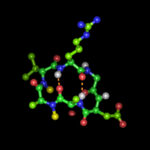Overview:
Vitamin K was discovered in 1929 as an essential nutrient for blood coagulation, the scientific term for blood clotting. The initial discovery was reported in a German scientific journal, where it was called “Koagulationsvitamin.” That’s where the K in vitamin K comes from.
- Vitamin K1 (phylloquinone): found in plant foods like leafy greens
- Vitamin K2 (menaquinone): found in animal foods and fermented foods, also produced by gut bacteria
How do Vitamin K1 and K2 Work?
Some scientists have suggested that the roles of vitamins K1 and K2 are quite different, and many feel that they should be classified as separate nutrients altogether.
However, more human studies are needed before the functional differences between vitamins K1 and K2 can be fully understood.
Vitamin K1 and K2 Supports…
Osteoporosis — which translates to “porous bones” — is common, especially among older adults. It strongly increases the risk of fractures.
As mentioned above, vitamin K2 plays a central role in calcium metabolism, the main mineral found in your bones and teeth.
Vitamin K2 activates the calcium-binding actions of two proteins — matrix GLA protein and osteocalcin, which help to build and maintain bones.
Interestingly, there is also substantial evidence from controlled studies that K2 may provide major benefits for bone health.
A 2022 meta-analysis of 16 studies in 6,425 postmenopausal women found that those taking vitamin K2 supplements had a positive effect on bone mineralization and increased bone strength.













